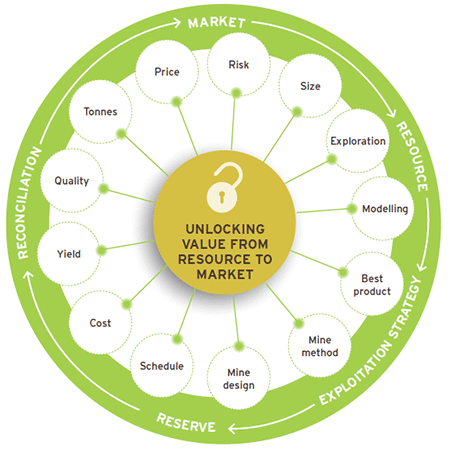Exxaro Resource limited Report Selector 2018
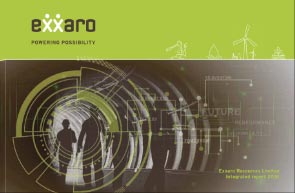
Currently viewing Integrated Report 2018
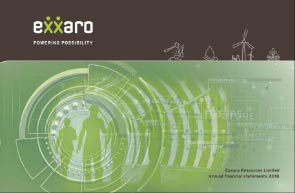
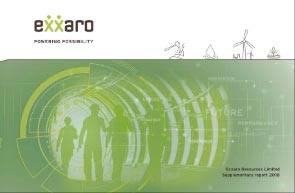
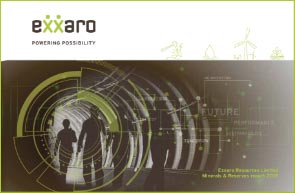

Currently viewing Integrated Report 2018



Exxaro continuously strives to enhance the level of estimation and reporting of Mineral Resources and Mineral Reserves. The group is committed to the principles of transparency, materiality and competency in reporting its Mineral Resources and Mineral Reserves.
 |
Exxaro broke ground on its R3.3 billion, first-of-its-kind digital mine on 5 July 2018. Belfast Coal is currently under construction and will start producing thermal coal in 2019. As a truly digital and connected mine, Belfast will contribute to a thriving coal business in the region and demonstrate Exxaro’s purpose of powering better lives in Africa and beyond. |
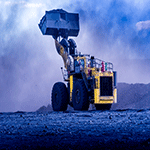 |
The R4.8 billion expansion of the Grootegeluk complex, the GG6 beneficiation plant, will ensure increased throughput and enhanced processing efficiencies to ramp-up export coal production at this important site. The project aims to triple the capacity of the current GG6 plant, producing semi-soft coking coal suitable for the export market, as well as power station coal. |
Locations of Exxaro's coal operations and projects |
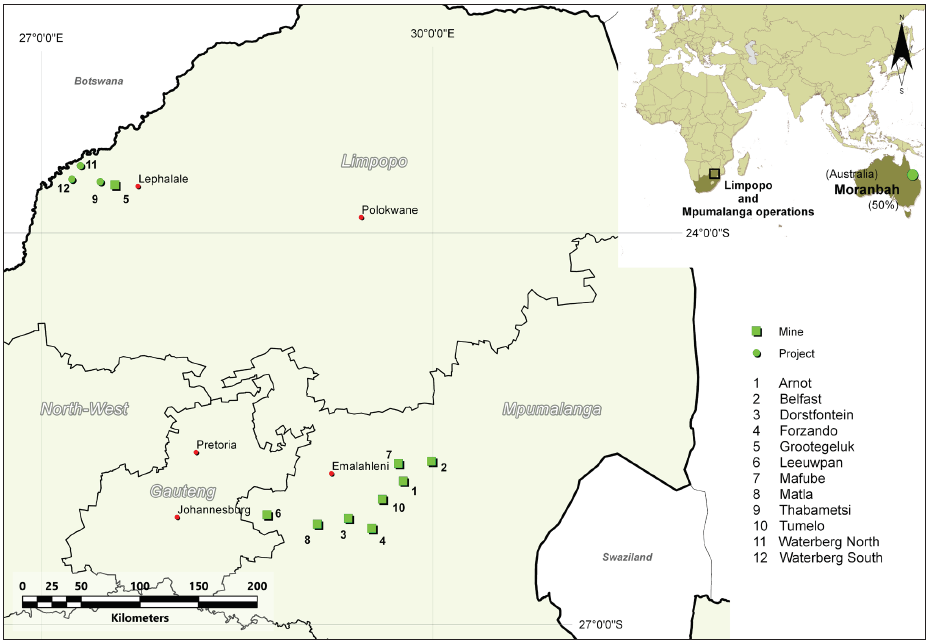 |
The information presented here is an extract from the Consolidated Mineral Resource and Reserve Report (CMRR) that encapsulates information on reporting governance, competence, tenure, risk, liabilities and assurance as well as comprehensive descriptions of applicable projects, operations and exploration activities in compliance with the JSE Listings Requirements (section 12). The reported Coal Resources and Coal Reserves presented are therefore summarised versions of this CMRR. The CMRR is available on our website.
Our Resources and Mineral Reserves were estimated by competent persons on an operational or project basis, and in line with the South African Code for Reporting of Exploration Results, Mineral Resources and Mineral Reserves, 2016 edition (SAMREC Code 2016) for African properties, except for Vedanta's base metal property. The Australasian Code for Reporting of Exploration Results, Mineral Resources and Mineral Reserves, 2012 edition (JORC Code) is used for Australian (coal and mineral sands) and Vedanta's properties. Exxaro has written confirmation from the competent persons that reporting complies with the various codes and they consent to the extracts presented as well as the publication of the CMRR. For Coal Resources and Reserves under Exxaro's management control, estimation is in line with the South African National Standard: South African guide to the systematic evaluation of Coal Resources and Coal Reserves (SANS 10320:2004).
Resource and Reserve estimates are quoted in full, irrespective of Exxaro shareholding. Exxaro reports mineral estimates that are directly under its management control and includes estimates for entities in which we hold a 25% interest or more. Supplementary descriptions are provided for projects and operations directly under our management control in the CMRR. For projects and operations included in the Exxaro Mineral Resource and Mineral Reserve statement, but in which Exxaro does not have management control, the reader is referred to that company's website for supplemental information.
Exxaro has a world-class Coal Resource portfolio, comprising fully owned operations and projects and a number of jointly owned operations and projects in South Africa and Australia. The fully owned operations and projects in South Africa lie in both the large and highly prospective Waterberg coalfield in Limpopo and the more mature Highveld and Witbank coalfields in Mpumalanga.
Since inception in 2006, Exxaro's total attributable Coal Resource and Coal Reserve figures have been relatively stable. This trend can primarily be ascribed to the relatively large Waterberg coal deposits, particularly the remarkable Grootegeluk complex. Estimated to contain 40% to 50% of South Africa's remaining Coal Resources, the Waterberg is viewed as the future of South African coal mining. Exxaro holds an estimated 3 billion tonnes of Measured and around 1.8 billion tonnes of Indicated Coal Resources in the Waterberg, primarily in Grootegeluk mine and the adjacent mining right of Thabametsi. The complex provides thermal Coal Reserves to Eskom's Matimba and new Medupi power stations and produces semi-soft coking and metallurgical coal through eight beneficiation plants (annual production of 30 million tonnes (Mt)).
The Grootegeluk complex is continuously evolving, illustrated by several large value-unlocking projects. While these projects underline the resourcefulness of our people, they also demonstrate the successful implementation of innovative and breakthrough technology. To an extent, the size of the Grootegeluk complex obscures changes in Coal Resource and Coal Reserve figures from events in the smaller Witbank and Highveld coalfields. Divestment from the NCC (New Clydesdale Colliery) coal mine and closure of Inyanda mine (both 2014), incorporation of Total Coal South Africa (renamed Exxaro Coal Central or ECC) in 2015 and divestment from the Eloff project (2018) affected Exxaro's reported figures in recent years.
In 2018, the Exxaro total attributable Coal Resource decreased slightly, mainly due to mining and the decision to divest from North Block Complex (NBC) near the town of Belfast in Mpumalanga. For Coal Reserves, an increase at ECC was offset by mining depletion at various operations, disinvestment from NBC and changes to pillar-extraction recovery at Matla, resulting in a slight decrease in total Exxaro attributable Coal Reserves.
For most operations, other than normal life-of-mine (LoM) depletion, no material changes to Coal Resources and Coal Reserves estimates are reported. However, there was an increase of 56% in the run-of-mine (RoM) Coal Reserves at ECC by incorporating the 2017 geological model to update the LoM and Coal Reserve classification for the Dorstfontein West and Dorstfontein East operations. This resulted in a material amount of seam 2 and seam 4 lower being included in underground Coal Reserves for Dorstfontein. At Matla mine, the update of the geological model and resource classification and subsequent review of LoM resulted in a 5.7% decrease in Coal Reserves. In addition, a reduction of the pillar-extraction recovery based on reviewing the extraction process to enhance ventilation and safety, as well as considering actual extraction figures in the reporting period, resulted in a further 13% decrease of the Coal Reserve at this operation.
Exxaro estimates over time
| Exxaro attributable Coal Resources and Coal Reserves | Exxaro attributable Coal Resources and Coal Reserves | |
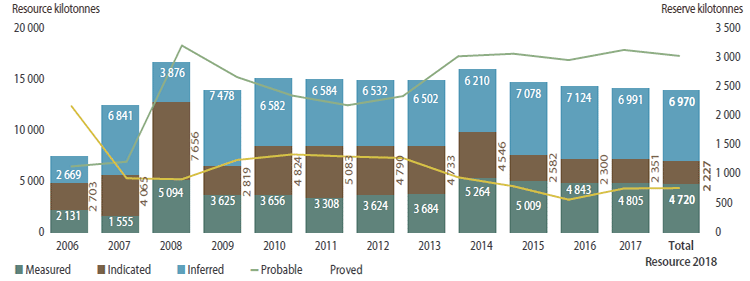 |
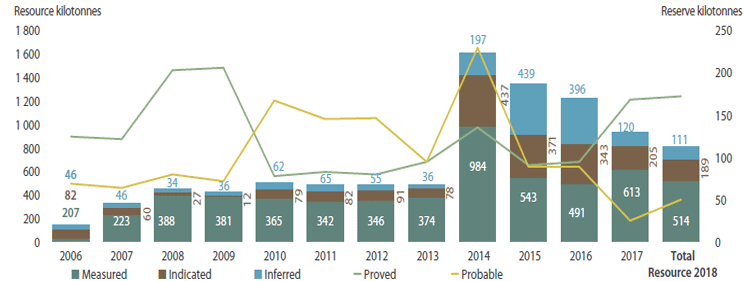 |
|
 There was a slight
decrease in the
total Exxaro
attributable Coal
Resources and
Coal Reserves
from 2017 to 2018. There was a slight
decrease in the
total Exxaro
attributable Coal
Resources and
Coal Reserves
from 2017 to 2018. |
||
In 2018, we continued to focus on unlocking value at our operations. We are acutely aware that our success as a mining company is built on the integrity of our Coal Resources and the effectiveness with which we exploit and extract these Resources.
| Increasing level of geoscientific knowledge and confidence |
|||||||
| Considering mining, metallurgical, processing, infrastructural, economic, marketing, legal, environmental, social, governmental modifying factors | |||||||
| COAL RESOURCES | UNLOCKING VALUE | COAL RESERVES | |||||
Continuously improving our level of geoscientific |
Modifying factors |
Optimising our plans to create the best fit to market use |
|||||
Executing integrated exploration plans: Dorstfontein, Forzando, Matla, Belfast, Grootegeluk Update of geological and structural models: Forzando, Matla, Grootegeluk, Belfast Innovation
|
Increasing extraction through innovation and knowledge:
|
Optimised life-of-mine plans (LoMP):
|
|||||
| ENHANCING GOVERNANCE | |||||||
From 2017, we aligned our reporting with SAMREC 2016 and JSE 2016 amendments for minimum contents of annual reports and have subsequently updated our life-of-mine mineral assets |
|||||||
| ASSURANCE | |||||||
Conducted tier 1 reviews on Grootegeluk, Forzando, Leeuwpan and Matla, resulting in optimised life-of-mine plans. |
|||||||
Case study: Belfast
The extraction strategy of the Belfast Coal Reserve was reconsidered in 2018. With a value lens of early extraction, a study was done to consider whether coal sales could begin before commissioning the coal-washing plant. Areas were identified where a crush-and-screen product could be mined and produced, while seamlessly integrating with the medium- and long-term exploitation strategy. Not only will this produce early revenue in 2019, it will lower the commissioning risk of the plant, with more knowledge available of the coal ore body. |
Case study: Forzando North
The LoMP was reconsidered, and areas under care and maintenance in Forzando North were identified that could be brought into production immediately to supplement current mining areas. The first section began production in the fourth quarter of 2018. Total production was increased, and the quality of the overall coal mix improved. |
|
| Case study: Matla Coal integrated resource review and exploration strategy At Matla Coal, future mining will occur between 40 years of historical mined-out areas and periphery of the available Coal Resource, resulting in increasingly challenging mining conditions. The push for more information in new areas has underpinned an innovative approach to understanding the remaining resource; the mine’s risk and opportunity domain analysis (RODA). The RODA spatially integrates all known and inferred geological risks to create weighted geological risk domains. The domains are applied during exploration and mine planning, as well as establishing geotechnical accessibility and mine-ability of Coal Reserves. Exploration drilling at the mine is focused on targeting areas of potential risk (risk domains) in and around future mining areas to ensure that geological structures and expected underground conditions are better understood and effectively communicated to the mine planning team. The continuous correlation between exploration interpretation and underground conditions in those areas improves the understanding of how to better predict and prepare for the impacts of conditions in future. |
||

|
.png) |
|
| Left: Geotechnical risk domains used to focus exploration drilling. Right: Burnt coal domains and variable seam elevation parameters associated with aeromagnetic structures (dolerite dykes) used to focus exploration drilling and mine planning. | ||
The purpose of the life-of-mine planning underlying our resource and reserve estimation is to unlock maximum value from the coal in the ground, for Exxaro, taking margin and net value into consideration. Each orebody has a unique mining methodology, processing parameters and targeted market segment that delivers maximum value to shareholders. This is impacted by updated resource information, developments in mining and processing technology and changes in market dynamics.
Consequently, the optimum exploitation strategy needs to be continually reviewed to ensure applicable resources end up in the most lucrative markets. This ongoing iterative process is conceptually illustrated alongside. A relentless drive to reduce the environmental footprint of operations is embedded in the process, and the continuous impact of the evolving legislative landscape is reflected in designs.
Resource-to-market model
